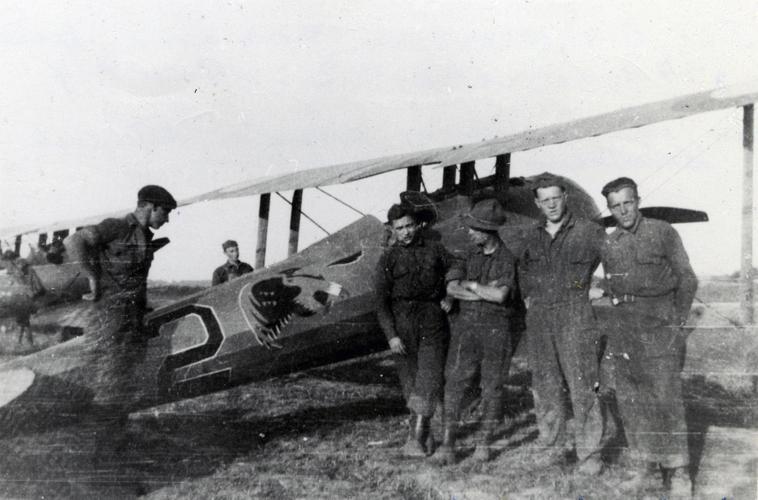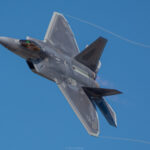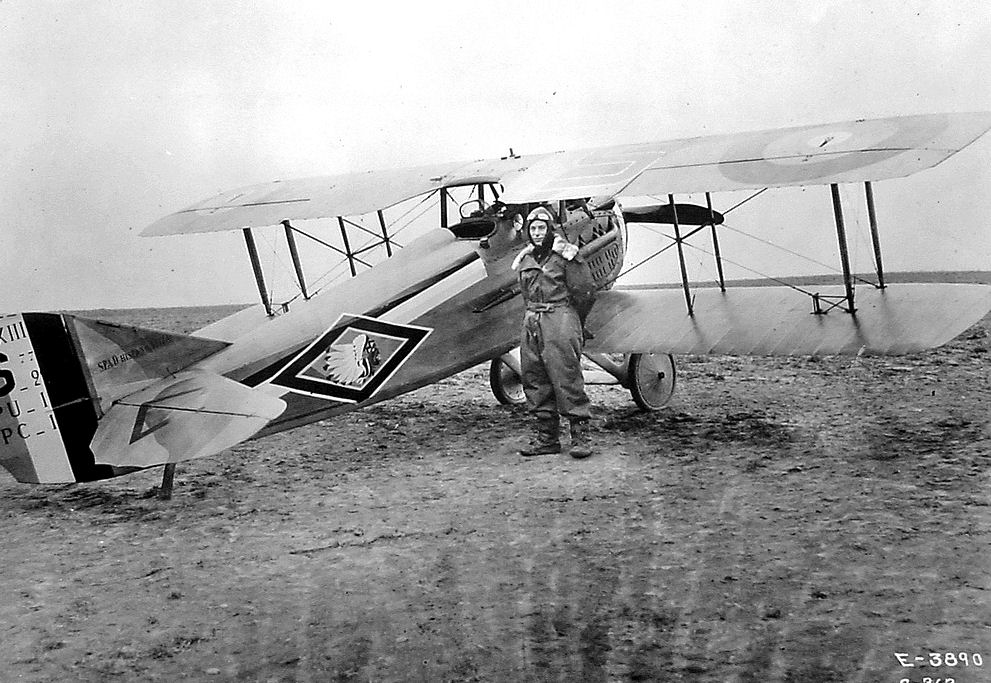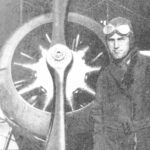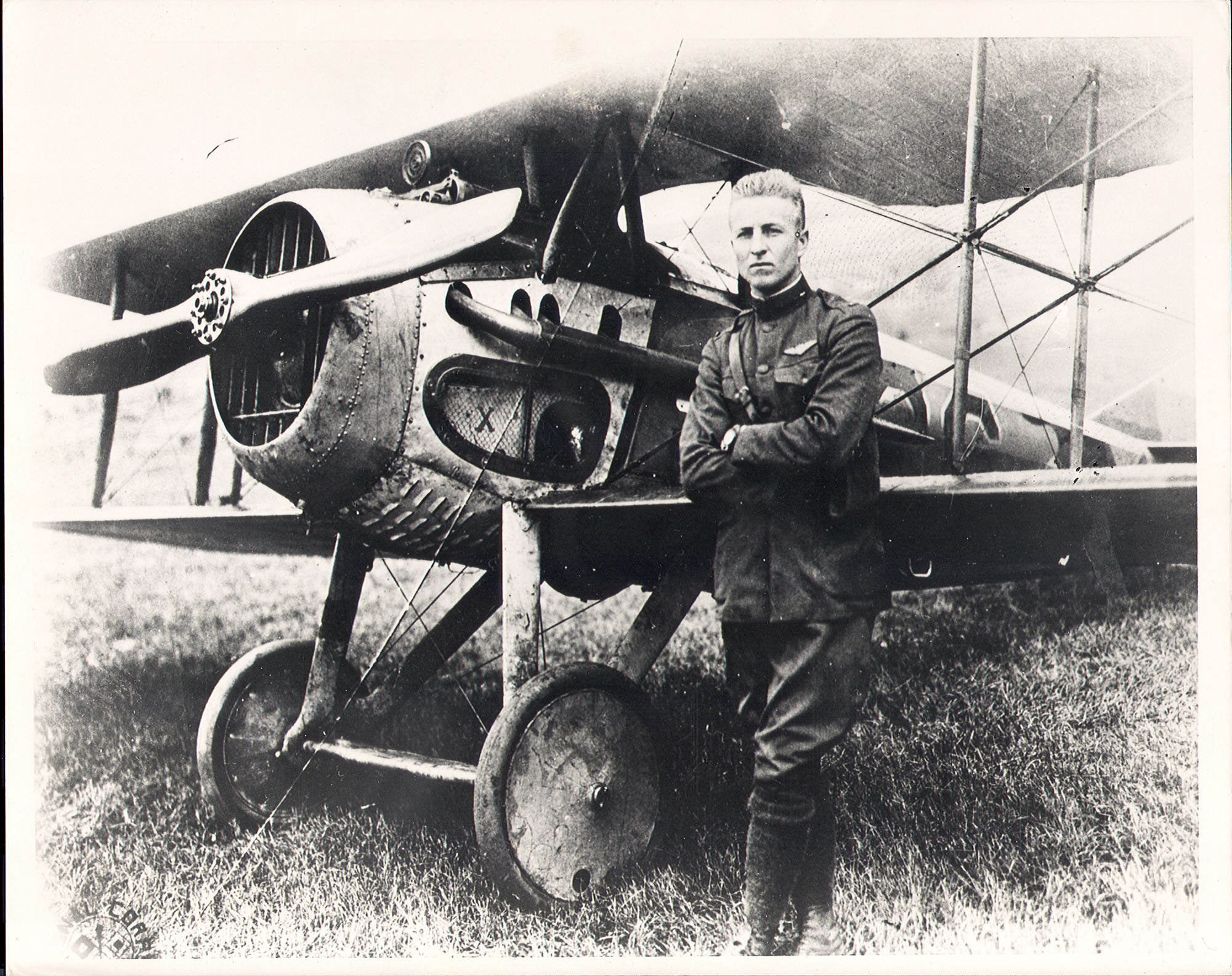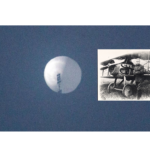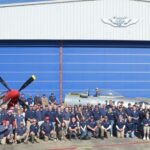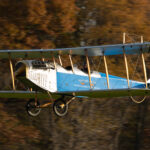by Matt Scales
On February 4th, 2023, the U.S. Air Force had an unusual mission, a task so atypical to modern warfare that it was almost beyond living memory, having last occurred at the tail end of WWII.[1] Now faced with the necessity of downing a balloon, Air Force officials turned to the unit with the most historical experience in this role, the Fightin’ Eagles of the 27th Fighter Squadron. So when the F-22 Raptor pilot flying callsign Frank 01 announced, “Splash one,” and his wingman in Frank 02 followed up with, “The balloon is completely destroyed,” upon the 27th Fighter Squadron’s successful completion of their mission to destroy a Chinese surveillance balloon off the South Carolina coast, the moment was far from the first time that pilots from the Fightin’ Eagles had sent a balloon to its doom.[2] While the leadership of Air Combat Command at Langley Air Force Base knew the history of the squadron they selected for this unique assignment, it is unlikely that they understood just how deep the unit’s connections to “The Great War” actually ran.
During World War One, American pilots downed 57 German observation balloons. A month before the first American ground troops fought in the Battle of Cantigny, Maj. William Thaw, a former member of the La Fayette Escadrille now flying with the 103rd Aero Squadron, teamed up with his squadron mate, 1Lt. George E. Turnure, to shoot down a German balloon near Montaigne. The final American aerial victories over German balloons took place on November 8th, 1918, three days before the war ended. Early that morning, 2Lt. John DeWitt of the 94th Aero Squadron downed one of these balloons, earning his first aerial victory. Later that day, 1Lt. Albert Weatherhead of the 95th Aero Squadron claimed two additional balloons, while 1Lt. Leslie B. Cooper dispatched a further example near Montmedy, wrapping up a unique legacy for his 27th Aero Squadron.[3]
The 27th Aero Squadron shot down a total of 22 balloons during the last five or so months of WWI, accounting for almost 40% of the total number falling to American pilots in the entire conflict. 1Lt. Zenos Miller opened the squadron’s tally on July 16th, 1918, with two balloons falling to his guns. 2Lt. Frank Luke (whom the 27th Fighter Squadron rightfully honored in the call sign they used during the events of February 4th) shot down ten balloons by himself, sharing credit with squadronmates in four further encounters; he accomplish this feat in just seventeen days! 1Lt. Joseph Wehner was the next highest scoring “balloon buster” in the Fightin’ Eagles; he received credit for five balloons, three of which he shared with Luke. In addition to Luke and Wehner, five other pilots from the 27th received full credit for downing balloons before the war ended. Two other men, 1Lt. Thomas Lennon and 1Lt. Leo Dawson, also each shared a victory with Frank Luke.[4]
However, while the 27th was busting balloons over enemy lines, another WWI squadron was doing its part to keep the aircraft flying. The 106th Aero Squadron arrived in France during December, 1917, undergoing redesignation as the 800th Aero Squadron two months later. They spent the war away from the front lines, repairing aircraft for the combat units. After the war, a former 94th Aero Squadron member named Jimmy Meissner moved to Birmingham, Alabama, where he started a flying club. Using his WWI celebrity as an eight-victory ace (including a balloon), Meissner gained federal recognition for this ‘club’ to become part of the National Guard in 1922. In 1936, the Army consolidated the WWI-era 106th Aero Squadron with the newly-formed 106th Observation Squadron, giving the National Guard Unit claim to its WWI heritage. In 1994, this squadron, newly redesignated as the 106th Air Refueling Squadron, accepted delivery of its first KC-135 Stratotankers.[5]
On February 4th, 2023, the unique stories of these two historic squadrons finally came together. The 27th Fighter Squadron was called upon, once again, to bring down a balloon, but needed help to stay in the air. From their birth in 1918, when airmen from the 106th Aero Squadron turned wrenches to make sure that fighter planes could accomplish their missions, their successors more than a century later again supported their friends at the 27th, although this time from the air. As KC-135 57-1473 (call sign Gasman 02) flew a racetrack pattern off the coast of Myrtle Beach, South Carolina, its crew from the 106th ARS provided the much-needed air-to-air refueling support for the 27th Fighter Squadron, ensuring that their F-22 Raptors were able to successfully prosecute their mission, a mission which the squadron’s forebears were no strangers to. It is fascinating how history sometimes repeats itself…
Many thanks to Matt Scales for this article. Scales is a 2007 Samford University history graduate, and a member of the U. S. Air Force Reserve who conducted a years-long search to track down and locate the iconic C-47 “That’s All, Brother.” To read his previous interview about that endeavor, please click HERE.
[1] World War One was not the last time balloons had been destroyed. Nearly 20 Japanese Fu-Go balloon bombs were downed over the US during WWII, the final being on April 13, 1945 when P-38s shot down balloons over Attu Island, Alaska.
[2] Altman, Howard and Tyler Rogoway. “The Shooting Down of China’s Spy Baloon In Moment-By-Moment Audio.” The Drive. February 6, 2023. https://www.thedrive.com/the-war-zone/the-operation-to-down-chinas-spy-balloon-in-moment-by-moment-audio
[3] U.S. Air Service Victory Credits: World War I. Maxwell Air Force Base, Alabama: Historical Research Division, Aerospace Studies Institute, 1969.
[4] Ibid.
[5] Matthew Scales, “Jimmy Meissner: The Father of The Alabama Air National Guard’” (bachelor’s thesis, Samford University, 2006), 4-6.







